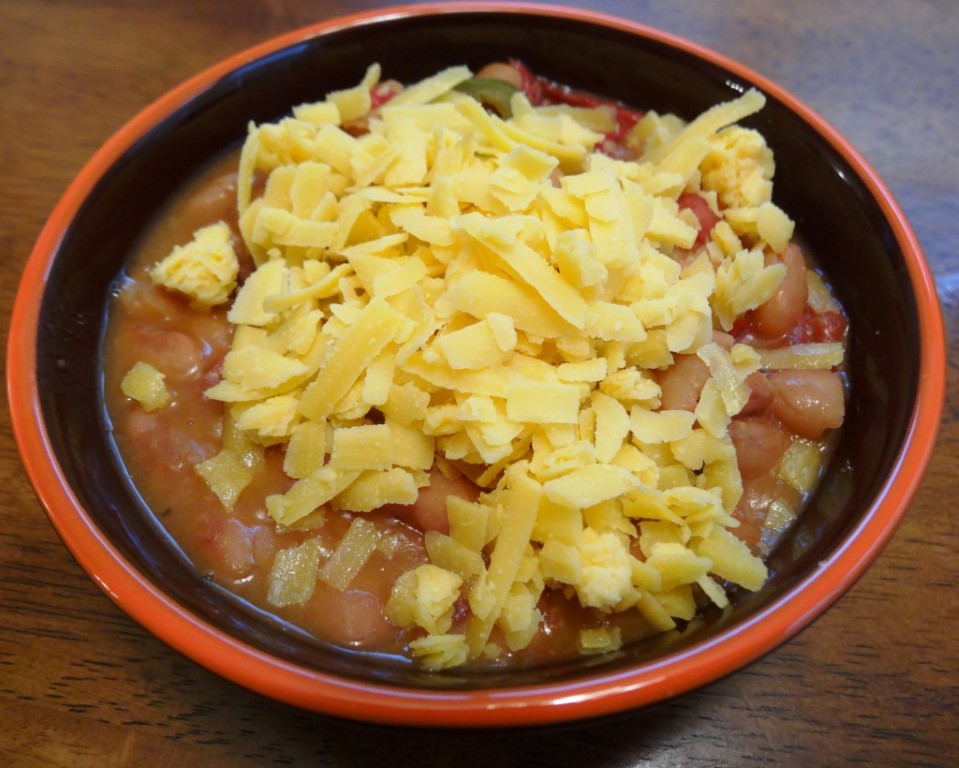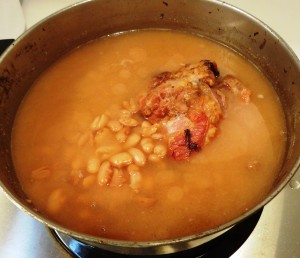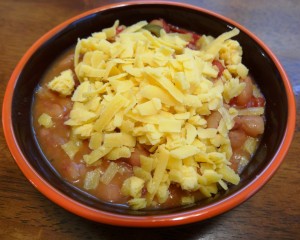Recipe: Home Cooked Beans Can Boost Your Food Budget
 I love beans, especially pinto beans, and home cooked beans are absolutely the best! In fact, if you have only eaten canned or commercially cooked beans in the past, you are in for a real treat if you try these beans! In addition to being delicious, they are very filling and satisfying. I find that I don’t get hungry as quickly after eating beans.
I love beans, especially pinto beans, and home cooked beans are absolutely the best! In fact, if you have only eaten canned or commercially cooked beans in the past, you are in for a real treat if you try these beans! In addition to being delicious, they are very filling and satisfying. I find that I don’t get hungry as quickly after eating beans.
The recipe below may seem time-consuming, but during most of those hours you don’t need to do anything. The beans are just sitting in the pot either soaking or cooking for the most of the time required. You must remember to start the soaking the day before you want to eat the beans, but, otherwise, all you have to do is put the pot on and go do whatever else you need to do.
Nutrients in Legumes
The legume family includes beans, peas, lentils, peanuts, and soybeans [more on soybeans later]. They “are excellent sources of [plant] protein, low-glycemic index carbohydrates, essential micronutrients, and fiber.” [source]
According to Sally Fallon Morrell in Nourishing Traditions, legumes and pulses are a traditional food that have “nourished mankind for centuries.” They have been the “poor man’s meat.” When properly cooked at home, they are an excellent and low-cost source of many essential nutrients. (Here’s a handy, printable chart of the nutrients in legumes. For more detailed information about specific legumes, use the USDA’s Nutrient Database.)
Legumes are rich in minerals and B vitamins. The pinto beans–one of my favorite beans–in this recipe are a good source of potassium, phosphorus, calcium, and magnesium. They also contain smaller amounts of several other important minerals–iron, manganese, zinc, copper, and selenium. Pinto beans are a very good source of folate, a member of the B vitamin family,. Another bonus–both pinto and kidney beans are high in omega 3 fatty acids.
Legumes and Cancer Prevention
Although limited, research has indicated that legumes can reduce the risk for some cancers. [2009 study]
The American Institute for Cancer Research says
Foods containing folate help reduce the risk of pancreatic cancer probably because of folate’s role in healthy cell division and repair of damaged cells.
Legumes contain other health-promoting substances that may also protect against cancer:
- Lignans and saponins
- Resistant starch, starch not digested in the small intestine, is used by healthful bacteria in the colon to produce short-chain fatty acids, which seem to protect colon cells.
- Antioxidants from a variety of phytochemicals, including triterpenoids, flavonoids, inositol, protease inhibitors and sterols. [source]
Some people avoid beans and other legumes because of their phytic acid content and enzyme inhibitors; however, careful, traditional preparation can neutralize the anti-nutrients and break down the complex sugars making the beans more digestible. [Nourishing Traditions, Legumes]
Soybeans
Soybeans are an exception to the traditional preparation I use for my pintos. Soybeans are very high in phytic acid and enzyme inhibitors that are not deactivated by soaking and ordinary cooking. To be safe, soybeans should only be eaten after they have been fermented according to traditional Asian methods that produce products like miso, tempeh, and natto. Unless fermented, soybeans can “produce serious gastric distress, reduced protein digestion and chronic deficiencies in amino acid uptake.” For this reason, soy milk and most other soy products like tofu, soy proteins, and some soy sauces should be avoided. [Nourishing Traditions, Legumes]
Recipe: Homemade Pinto Beans
Ingredients
1 pound of organic dry pinto beans (this batch was Whole Foods organic dry pintos)
1 ham hock, preferably from pastured pigs (you can substitute bacon or a meaty ham bone)
1 organic onion, chopped, optional
1 strip of dried kombu, optional
2 to 4 garlic cloves, peeled and mashed, optional
Sea salt and freshly ground organic black pepper, to taste
Preparation
First day
Pick over (remove stones and other foreign material) and rinse well.
 Put beans in a large pot (at least 4 quart) and cover with filtered water by at least two inches. Cover and let soak for 12 to 24 hours. These beans soaked for about 21 hours. Check the beans occasionally and add more water if necessary to keep the beans well covered. Nourishing Traditions recommends using warm water. I either start with water that’s been warmed or I just put the pot on a burner turned on low for two or three minutes.
Put beans in a large pot (at least 4 quart) and cover with filtered water by at least two inches. Cover and let soak for 12 to 24 hours. These beans soaked for about 21 hours. Check the beans occasionally and add more water if necessary to keep the beans well covered. Nourishing Traditions recommends using warm water. I either start with water that’s been warmed or I just put the pot on a burner turned on low for two or three minutes.
Second day
After 12 to 24 hours, drain and rinse the beans. Put them back in the rinsed pot (or another pot) and add filtered water to cover by at least an inch. Add ham hock, bacon, or ham bone, and other optional ingredients. Bring to a boil and skim any foam that forms on top. Cover, reduce heat to a simmer, and cook for 4 to 8 hours. I cooked these beans for about six hours. I didn’t add kombu to this pot of beans, but I often do. It should increase digestibility and reduce gas formation. Season to taste with salt and pepper toward the end of the cooking time.
 I always make a large pot of beans and freeze some for later use, but you can reduce the amounts in the recipe if you don’t need that many beans.
I always make a large pot of beans and freeze some for later use, but you can reduce the amounts in the recipe if you don’t need that many beans.
There are many super good ways to use home cooked pinto beans. One of the simplest preps for a quick lunch or dinner is to top a bowl of hot beans with shredded sharp cheddar cheese (raw cheese if available) and jalapeno slices (see photo). Sometimes I add some chopped tomato as I did in these photos.
Leftover pinto beans are wonderful when mashed and refried with lard, goose fat, or other healthy fat. I made refried beans for my Grassfed Beef Tostadas with Guacamole. I usually season refried beans with some chili powder.
This recipe is based on the Basic Beans recipe in Nourishing Traditions, page 496 in my edition.
For sources of ingredients, go to my Resources page.



Thanks for the awesome recipe. I can’t wait to try it!
Pingback:Grassfed Beef Chili with Organic Pinto Beans